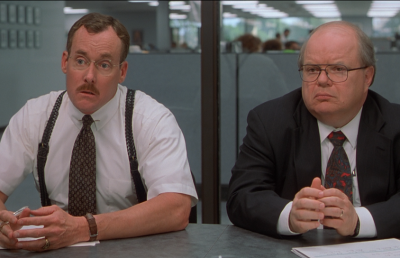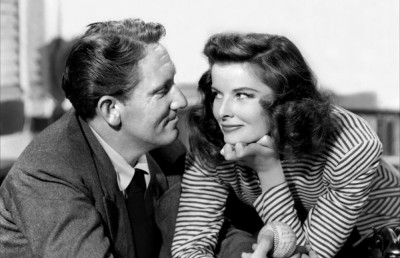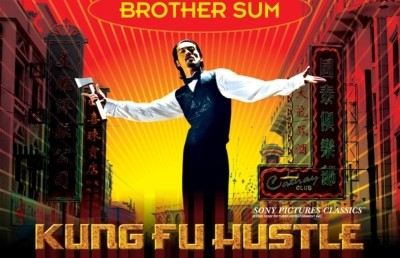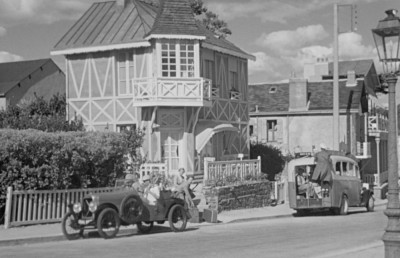An Analysis of Filmic Satire: the Modern and Vernacular in Jacques Tati’s Mon Oncle
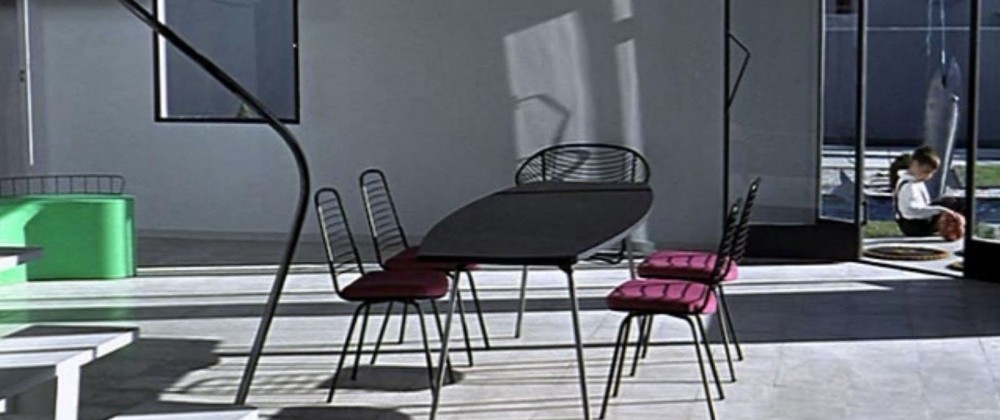
The postmodernist paradigm appeared around the 1960s as an ideological reaction/evolution to/from the archetypal modernist philosophical framework. In architecture, post-modernity expressed itself through a ludic reinterpretation of classical codes and modernist techniques. Accordingly, we may consider such spirited architects as Michael Graves (New-York Five group) as satirists of the purity dogma imposed by modernists the likes of Le Corbusier and Mies van des Rohe. The satirical attitude that post-modernity brought forth influenced all artistic spheres, including film. The comedy genre mostly benefited from the trend, as it used humour as a vector of subtle social and/or political denunciation. Newly produced comedies now had a target, an edge, some seriousness. Sociologically, modernism’s hegemonic confidence on technology as an omniscient saviour had generated a humanist alienation that severed some values of social solidarity and communication. The filmic satire dealt with contentious material with sarcasm, irony, and wit (King). In 1958, French filmmaker Jacques Tati addressed the artistic and social alienations modernity produced in a cinematic work titled Mon Oncle. In the form of a playful visual comparative exposé, Tati expressed his point of view through the dichotomy in the architecture, filmic techniques and human relations depicted in his film.
At the end of the 1920s, the International Congress of Modern Architecture declared that “the most efficient production ensues from rationalization and standardization.” [1] The architectural works that resulted from these directives –exploiting pure and straight shapes exclusively, excommunicating ornamentation (rationalization)– were devoid of humanity, bereft of life. One of the Modernists’ objectives was to establish an international architectural style (standardization): such predicament unfortunately deprived societies of their vernacular. In France, the main tenant of Modernism, architect Le Corbusier, was identified as the source of the “urban sterilization virus”: his “lifeless” constructions invaded Paris, Marseille, Ronchamp, etc. Charles-Édouard Jeanneret’s (Le Corbusier’s real name) removal of all and any vitality in his works is best described by the name he gave to his apartment buildings projects: “Habitation Units.” Tati must have thought this situation deplorable, as he constantly juxtaposed (or opposed) the two “realities” –the modern and the vernacular – in Mon Oncle, e.g. in the opening credits.
The first shot the viewer enjoys depicts streets the credits, the names of the cast and crew, designed as street signs. The signs are positioned before a live construction site: a concrete building formed of regular and repetitive rectangular openings is being worked on. After all “administrative” information has been passed on to the viewer,Tati delivers the title of his film in a different shot: the words “Mon Oncle” written in chalk on an old brick wall, clearly part of a more traditional part of town or a vernacular adjacent suburb. The collision produced by the juxtaposition of these two shots affirms the theme of Tati’s filmic diatribe; the use of chalk stresses the child-like mannerism that will be applied to the process.
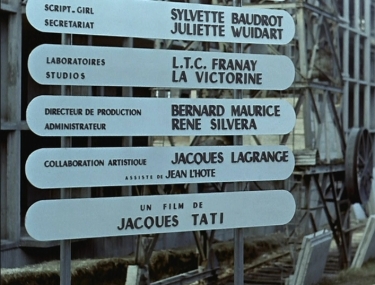
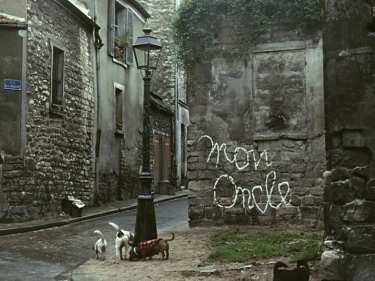
In one short opening sequence, Tati has cleverly exposed his subject and tone. The artistic design the French filmmaker elected for Mon Oncle further supports the dichotomy between the two realities present in the film, mostly in the elaboration of sets. The house that was created for the modern family (the Arpels) recalls modernist constructions such as Gerrit Rietveld’s or Le Corbusier’s, through the linearity, pure shapes and window strips applied to its conception (compare figures 1, 2 and 3).
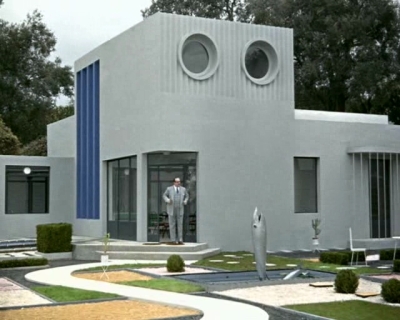
Figure 1. The Arpels House (Mon Oncle)
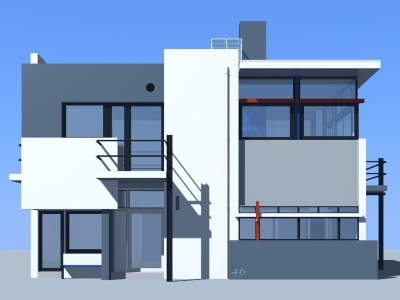
Figure 2. Gerrit Rietveld’s “Schröder House,” Utrecht (1924)
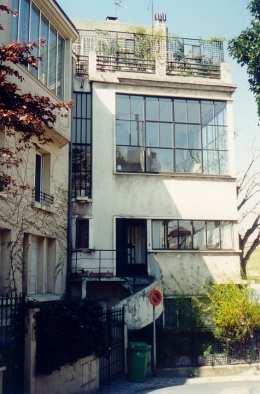
Figure 3. Le Corbusier’s “Ozenfant House and Studio,” Paris (1922)
This radical and rather dull-looking artistic choice is later opposed to the labyrinthine and heteroclite –hence, lively– composition of the Mr.Hulot character’s vernacular apartment building (see figure 4).
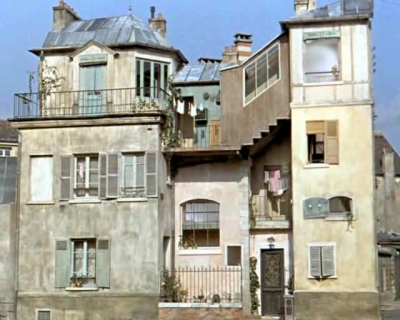
Figure 4 Monsieur Hulot’s apartment building
The satirical content of such visual comparisons resides in the exaggeration of both styles of design, as can be seen in the scene in which Mr.Arpel meets with his boss at the factory (see figure 5): the room is unreasonably large and empty.
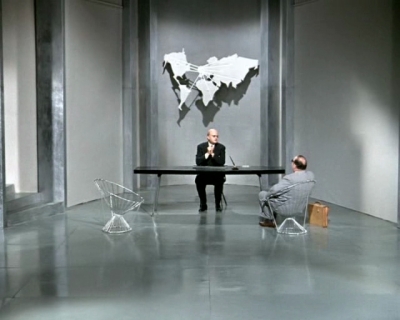
Figure 5 The “Meeting” sequence set
Through these visual clues, the filmmaker suggests an attitude on his characters’ psychology: synergically, the modern design of the Arpel’s house indicates the emotional conservatism of the family, whereas the emancipated shape of the Hulot apartment building calls for a more liberal character. Furthermore, Tati emphasizes his rhetoric by superposing both stylistic idioms in single shots (see figures 6 and 7): the visual appeal bestowed on the vernacular – bright colors, plurality of shapes – carries the opinion of the filmmaker (figure 6), while an allegorical composition indicates his message (figure 7: the modern destroys the vernacular).
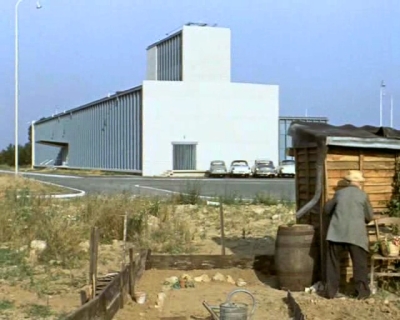
Figure 6. Modern vs. vernacular visual superposition 1 (Mon Oncle)
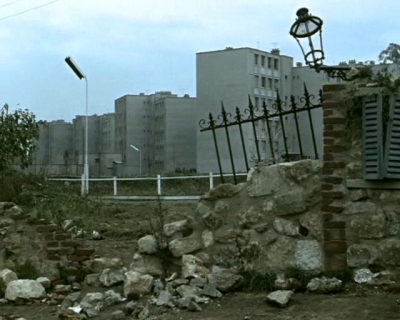
Figure 7 Modern vs. vernacular visual superposition 2 (Mon Oncle)
One of the most prominent uses of a filmic technique as a satirical device in Mon Oncle is the exploitation of sound. A clear opposition between the respective aural treatments of the modernist and vernacular realities is established at the very beginning of the film: the shots showing the technical credits of the movie in the “urban” setting – a modern construction site– are united with a soundtrack composed of machinery noise exclusively, whereas the following shot mentioning the title of the film –in a village-like environment– is accompanied by some playful “extradiegetic” music. It is important to note that the unmotivated nature of the music cleverly transmits the intention of the filmmaker. Through the experience of the first scene at the Arpel’s house, one may deduce Tati’s sound strategy: “city/modern” scenes will be composed only of motivated sound effects (mostly foley sounds) and “village/vernacular” scenes will be commonly coupled with an unmotivated music soundtrack –reminiscent of a classical Symphony, one single song and its variations will be exploited throughout the movie. Here, satire expresses itself, once again, through exaggeration: an absurd treatment of sound. Considering the aforementioned scene at the Arpel’s house, one may point to the excessive volume of the different foley sounds – steps, clothes, etc – and the absent distance relativism in their treatment (camera far/sounds loud). Regardless of the position of the camera or the scale of the shot, sounds are loud and raw, i.e. no reverberation effect has been applied to “naturalize” said effects. Additionally, the noteworthy –and somewhat unnatural– omission of dialogue in the scene emphasizes the hegemonic presence of objects: Tati stresses the superficial materiality of modernity and its inherent social alienation.
In Mon Oncle, mise-en-scène techniques participate in the satirical effort, mainly through set details and shot composition. The dichotomy between modernist and humanist “lifestyles” is addressed in several ways, one of which is the design of the Arpel’s home setting where massive metal fences separate the terrain from the neighbour’s. This modern individuality is then opposed to the dense, communal aspect of the “village”/vernacular culture, as demonstrated by Mr. Hulot living in a populated apartment building. The “individuality versus collectivity” theme is transposed in the composition of shots representing respectively the urban and suburban cultures: a very symmetrical, linear and shallow composition rules most of the close shots associated with a private urban setting –excluding (see figure 8)– whereas collectivity is stressed by a heterogeneous in-depth composition for wide shots in a public vernacular environment –including (see figure 9). The cheerful colors employed in the village scenes, along with the lively composition and content of their shots, translate the satirical intention of the author: favourable to the vernacular, against the dullness of the modernist lifestyle.
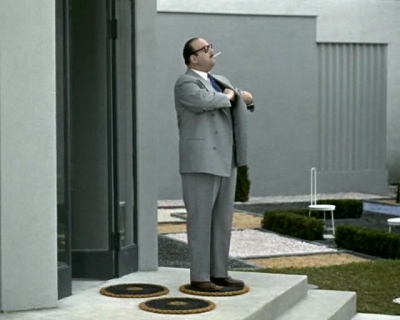
Figure 8. Modernist composition (Mon Oncle)
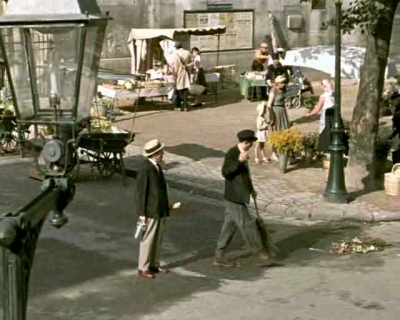
Figure 9. Vernacular composition (Mon Oncle)
Jacques Tati’s hyperbolic depiction of elements of urban landscape and culture contributes to his cynical interpretation of the social alienation Modernism brought forth. As one may detect in the very first few minutes of Mon Oncle, the many city road indicators (arrows, lines, pillars, curves, etc.) are more restrictive than in real life: they leave no interpretation possible as they are designed to funnel the way a car or a human must circulate. These stylized totalitarian transportation regulations are added to a caricatured portrayal of the urban worker’s morning routine: in Tati’s film, the early traffic jam does not exist as all cars travel in a very ordered fashion, forming unrealistic straight lines, thoroughly respecting every road sign (see figure 10). Next, the viewer sees a line of cars stopping by a school, dropping off kids. The process evolves in a regular rhythmic manner: a car stops at the pedestrian crossing next to the school, its passenger door opens, one kid comes out, etc. The constancy of the operation is cyclical: every drop-off takes as much time as the preceding; no more than one kid ever comes out of a car; every car brakes at the very same spot; passenger doors seem to close by themselves at the same speed, etc. As a matter of fact, the whole procedure is mechanically repetitive, thus stressing Tati’s observation of the modernist lifestyle: its loss of spontaneity has transformed contemporary life into a factory-like repetitive chain of actions.
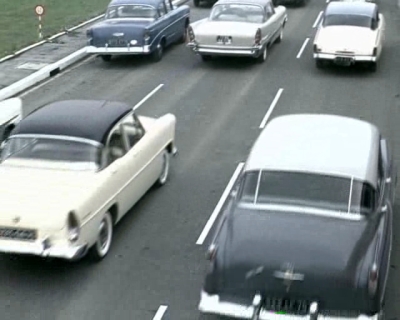
Figure 10 Ordered “traffic” (Mon Oncle)
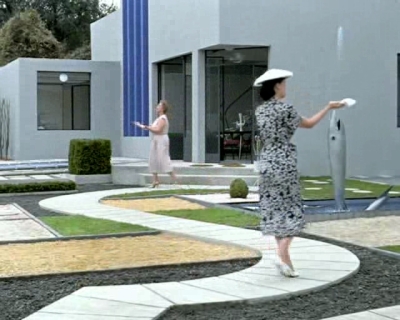
Figure 11. Characters talking without eye contact (Mon Oncle)
The causal elements in the narrative of Mon Oncle and the acting performances are additional tools with which Tati relevantly elaborates his caustic evaluation of modern society. The superficiality in human relations that the emergence of the City advanced during the modernist era is depicted by the magnified mannerism concealing the dialogue exchanges in urban settings. The costumes, level of language (e.g. the exaggerated use of superlatives in dialogue), and overstated decorum function in establishing the importance of “appearance,” the superiority of outer-self over inner-self. This complex hypocritical “mask” bestowed upon modernist sociology is portrayed in the film through an important prop: the fish-like water fountain in the Arpel front garden. The absurd obsession of Mme.Arpel over having the fountain work when greeting outsiders advocates the importance she gives to maintaining her social status, to embellishing her public image. The prop also acts as a discriminating tool, since Mme.Arpel will not activate the fountain for people she considers “inferior” or people who need not be “impressived”. As such, the fountain is not turned on for a delivery man, Mr.Hulot and Mr.Arpel. Through these narrative elements, Tati exposes the alienation dividing the Arpel family and their misdirected efforts at establishing unimportant and delusory social relationships. Visually, the French filmmaker illustrates such complex insincerity through the S-shaped alleyway in the Arpel’s garden linking the entrance gate to the house porch: when Mme.Arpel greets an outsider, both she and her invitee have to proceed across the superfluously impractical entranceway. The satire is further emphasized by the characters continuing their small-talk dialogue –or shall we say monologues– across the alleyway, looking straight forward, regardless of the relative position of their interlocutor: at some point, they are both mindlessly talking in space (see figure 11). The feigned enthusiasm of the futile conversation is thus denounced by the author.
As indicated in King’s chapter “Satire and Parody” from Film Comedy: “the satirical mode requires observation and judgement rather than identification […] the conventions of psychological realism and character motivation are removed. [2] This narrative strategy is often employed by Tati: the “coldness” of his films, or lack of character mimesis, makes the viewer aware of the filmmaker thinking, observing and theorizing over the shallow persona of his characters, often caricatures of broad societal archetypes (the boss, the employee, the father, the mother, the neighbour, etc.). Even though the Hulot character personifies the “unsung” hero in many of his films, Tati’s treatment of the character leaves the audience on the outskirt of his psychology: Hulot’s whereabouts and motivations remain unclear to this day. However, the character’s favoured exploitation in Mon Oncle positions him as the more “human” individual, gently rebelling against the dominant ideology (King). In the film, Tati is depicted as the humanist character, bearing humane and philanthropic values. Whereas Le Corbusier has been considered as the modernist virus into vernacular architecture, Hulot is portrayed in the film as the antidote curing modernism’s social alienation. His “naturalness,” altruism and authenticity will cure the Arpel family from its estrangement, as depicted in the airport scene at the end of the movie: Mr.Arpel and his son unusually leave, hand-in-hand, both in a cheerful mood.
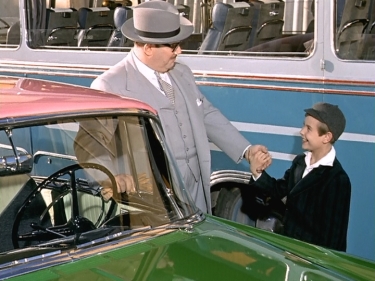
The ‘good’ influence of Mr. Hulot
The plethora of “serious” content exposed above is counterbalanced by a plurality of witty and childlike visual gags ranging from physical to prop comedy, a process which has formed Jacques Tati’s style over the years. The playful tone bestowed upon his cinematic works has contributed to how inner meaning underscored. Instead of imposing a drastic point of view, which might repel an audience, Jacques Tati has the creative wisdom of proposing a thoughtful morale, and leave the precise interpretation and acceptance of the position up to the viewer. Such an understanding of the processes of comedy and filmic communication is to advocate Tati’s mastery of satire.
Bibliography
King, Geoff. Film Comedy. Wallflower Press, London and New-York City, 2002. p. 94-96.
Nuttgens, Patrick. Histoire de l’architecture. Phaidon, Paris, 2002. 350 p.
Websites consulted
The Great Buildings. Accessed November 29th, 2009.


